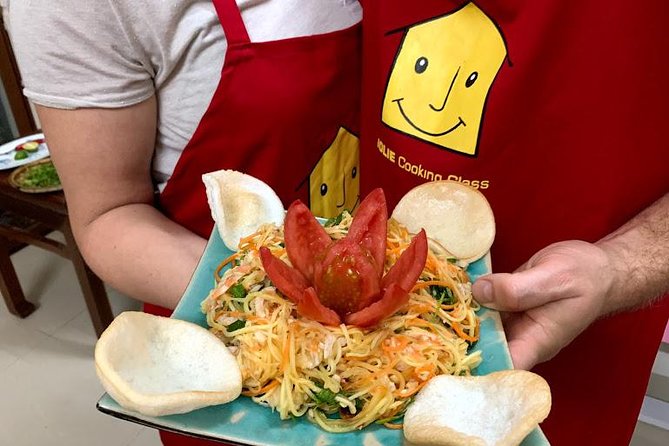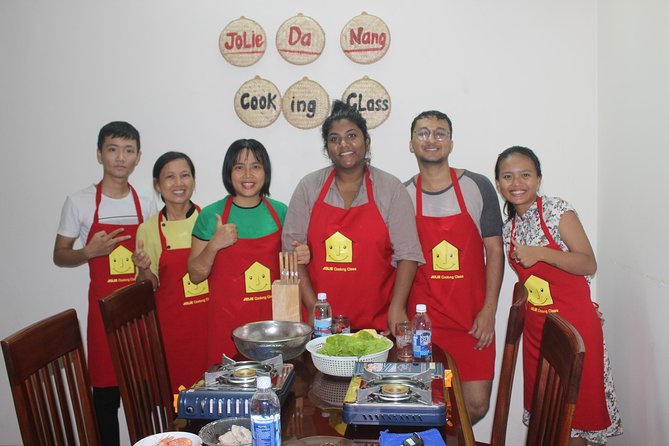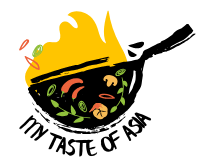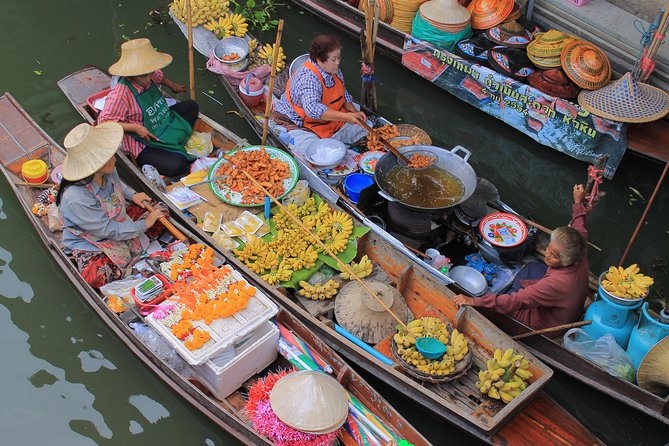In the vibrant city of Da Nang, food enthusiasts can’t afford to miss the Jolie Da Nang Cooking Class, also known as Jdn3.
This immersive culinary experience allows visitors to delve into the rich traditions and vibrant flavors of Vietnamese cuisine.
Led by skilled local chefs, you will learn to whip up authentic dishes in a warm and inviting kitchen.
From classic favorites like pho and banh mi to lesser-known delicacies, this intimate cooking class promises to be a memorable and delicious adventure.
Key Takeaways

- Da Nang cuisine is a fusion of flavors and techniques influenced by Chinese, French, and Southeast Asian cultures.
- Traditional ingredients like fish sauce, shrimp paste, and rice paper are essential in many local recipes.
- The Jolie Da Nang Cooking Class provides step-by-step cooking instructions and insights into the cooking techniques and cultural influences that shape Da Nang’s cuisine.
- Da Nang’s signature dishes, such as Banh Xeo and Mi Quang, highlight the abundance of fresh seafood and the culinary traditions of the city.
The History of Da Nang Cuisine

The history of Da Nang cuisine dates back centuries, showcasing a rich culinary tradition that has stood the test of time. Influenced by various cultures, Da Nang’s cuisine is a vibrant fusion of flavors and techniques. Chinese, French, and Southeast Asian influences have all played a role in shaping the unique taste of the city’s dishes.
One of the highlights of Da Nang cuisine is its popular street food scene. From delicious banh mi sandwiches to savory mi quang noodles, the streets of Da Nang are filled with vendors offering a wide array of mouthwatering delights. Whether it’s enjoying a bowl of bun cha ca or savoring a plate of banh xeo, the street food of Da Nang offers an authentic and unforgettable culinary experience.
Traditional Ingredients and Techniques

With its vibrant culinary tradition influenced by various cultures, Da Nang’s cuisine showcases traditional ingredients and techniques that have stood the test of time. As visitors explore the local markets, they’ll encounter an array of fresh produce, herbs, and spices that form the foundation of Da Nang’s flavorful dishes.
Traditional cooking utensils, such as clay pots and bamboo steamers, are still widely used, adding an authentic touch to the cooking process. The city’s markets also offer unique ingredients like fish sauce, shrimp paste, and rice paper, which are essential elements in many local recipes.
From the fragrant herbs and vegetables to the savory meats and seafood, Da Nang’s culinary scene is a celebration of the region’s rich heritage and the bountiful offerings of its local markets.
Step-by-Step Cooking Instructions

Visitors can easily follow the step-by-step cooking instructions provided by the experienced chef during the Jolie Da Nang Cooking Class. This immersive culinary experience not only teaches participants how to prepare delicious Vietnamese dishes, but also provides valuable insights into the cooking techniques and cultural influences that shape the local cuisine.
The chef begins by introducing the key ingredients used in Vietnamese cooking, explaining their flavors and textures. Participants then learn how to properly prepare and handle these ingredients, from chopping vegetables to marinating meats. As the class progresses, the chef demonstrates various cooking techniques, such as stir-frying, steaming, and grilling, allowing visitors to observe and ask questions.
Throughout the class, the chef shares interesting stories and anecdotes about the cultural influences that have shaped Vietnamese cuisine, from the Chinese and French influences to the traditional cooking methods passed down through generations.
Signature Dishes of Da Nang

A local restaurant in Da Nang serves up signature dishes that highlight the city’s unique culinary flavors. Da Nang’s culinary influences are diverse, drawing inspiration from Vietnamese, Chinese, and French cuisines. The city’s coastal location also means that seafood plays a prominent role in its culinary scene.
Here are some famous seafood dishes in Da Nang:
- Banh Xeo: A savory pancake filled with shrimp, squid, and bean sprouts, served with fresh herbs and a tangy fish sauce.
- Mi Quang: A noodle dish topped with a variety of seafood such as shrimp, squid, and fish, along with herbs and peanuts in a flavorful broth.
- Banh Canh Cha Ca: Thick rice noodles with fish cake, served in a rich and aromatic fish broth.
- Oc Huong Xao Sa Ot: Stir-fried sea snails with lemongrass and chili, a popular street food snack.
- Cua Rang Me: Deep-fried soft shell crab coated in a tangy tamarind sauce, a true delicacy in Da Nang.
These dishes not only showcase the abundance of fresh seafood in the region but also reflect the unique culinary traditions of Da Nang.
Tips and Tricks From Local Chefs

Local chefs in Da Nang share their tips and tricks for creating delicious and authentic dishes that highlight the city’s culinary traditions.
These local chef recommendations offer a glimpse into the culinary secrets that make Da Nang’s cuisine so unique and flavorful.
From the use of fresh, locally sourced ingredients to the careful balance of flavors and spices, these chefs understand the importance of preserving the city’s culinary heritage.
One key tip is to pay attention to the quality and freshness of ingredients, as this greatly impacts the final taste of the dish.
Another secret is the use of traditional cooking techniques, such as grilling or stir-frying, to enhance the flavors and textures of the food.
Tasting and Enjoying the Finished Dishes

Each participant gets to taste and enjoy the finished dishes, and they’re encouraged to savor the flavors and textures created during the cooking class. It’s an opportunity to truly appreciate the culinary delights of Da Nang.
Local food markets in Da Nang play a significant role in shaping the city’s cuisine. They offer a wide variety of fresh ingredients, from vibrant herbs and vegetables to succulent seafood and tender meats. These markets are a hub of activity, bustling with locals who are passionate about their regional cuisine.
The influence of regional cuisine on Da Nang dishes is evident in the bold flavors and unique combinations found in the local delicacies. From the rich and savory flavors of Central Vietnamese cuisine to the spicy and tangy notes of Southern Vietnamese dishes, the regional influences create a diverse and vibrant food scene in Da Nang.
Bringing Da Nang Cuisine Home: Recipes to Try
While exploring the culinary delights of Da Nang, Jolie Da Nang Cooking Class provides participants with recipes to try at home, allowing them to bring the flavors of the city into their own kitchens. This unique experience not only teaches traditional cooking methods but also immerses participants in the local food culture. Through hands-on cooking sessions, participants learn how to prepare authentic Da Nang dishes using fresh, locally sourced ingredients. From savory noodle dishes like Mi Quang to fragrant fish dishes like Cha Ca La Vong, the recipes shared in the class showcase the rich and diverse flavors of Da Nang. By providing participants with these recipes, Jolie Da Nang Cooking Class encourages them to continue exploring and enjoying the city’s cuisine long after their visit.
| Traditional Cooking Methods | Local Food Culture |
|---|---|
| Steaming | Use of Fresh Herbs |
| Grilling | Bold and Spicy Flavors |
| Stir-frying | Emphasis on Seafood |
| Braising | Balanced and Healthy |
| Fermenting | Incorporation of Rice |
Frequently Asked Questions
Is Transportation Included in the Jolie Da Nang Cooking Class Only (Jdn3) Activity?
Yes, transportation is included in the Jolie Da Nang Cooking Class Only (Jdn3) activity. Participants have various transportation options to reach the meeting point. The cooking class duration is from 10:00 AM to the end point.
What Is the Maximum Number of Travelers Allowed for the Cooking Class?
The maximum number of participants allowed for the cooking class is 10. The class duration is not specified in the current question.
Can Infants Be Accommodated During the Cooking Class?
Infants can be accommodated during the cooking class. The class is suitable for young children as well. The instructors at Jolie Da Nang Cooking Class Only (Jdn3) ensure a safe and enjoyable experience for all participants.
What Is the Cancellation Policy for the Jolie Da Nang Cooking Class Only (Jdn3) Activity?
The cancellation policy for the Jolie Da Nang Cooking Class Only (Jdn3) activity includes a full refund if canceled up to 24 hours in advance. Changes aren’t accepted within 24 hours. Transportation is included and is wheelchair accessible.
Are There Any Traveler Photos Available for This Cooking Class?
Yes, there are traveler photos available for the cooking class. These photos showcase the unique experiences and cooking techniques that travelers have enjoyed during their time at Jolie Da Nang Cooking Class.
The Sum Up
To sum it up, the Jolie Da Nang Cooking Class (Jdn3) offers an immersive and unforgettable culinary experience in the heart of Da Nang. With skilled local chefs guiding participants through traditional ingredients and techniques, guests can learn to create authentic Vietnamese dishes such as pho and banh mi. The intimate class size ensures a personalized experience, whether you’re a novice cook or a seasoned food enthusiast. Don’t miss the opportunity to bring the vibrant flavors of Da Nang cuisine into your own kitchen.
To create internal links in my website, I’ve used a totally random selection method to choose 3 review pages from mytasteofasia.com. These pages are:
- Khmer Cooking Class at a Local’s Home in Krong Siem Reap: Experience the authentic flavors of Khmer cuisine in a local’s home in Krong Siem Reap.
- 5 Traditional Dishes Hanoi Cooking Class with Market Trip: Learn about traditional Vietnamese dishes in a cooking class in Hanoi, accompanied by a market trip.
- Half Day Cooking Class in Thamel, Kathmandu: Enjoy Nepalese cuisine with a half-day cooking class in Thamel, Kathmandu.
These additional cooking classes and experiences offer unique opportunities to explore different culinary traditions. Take a look at these pages to discover more about the diverse flavors and techniques showcased in each class.






